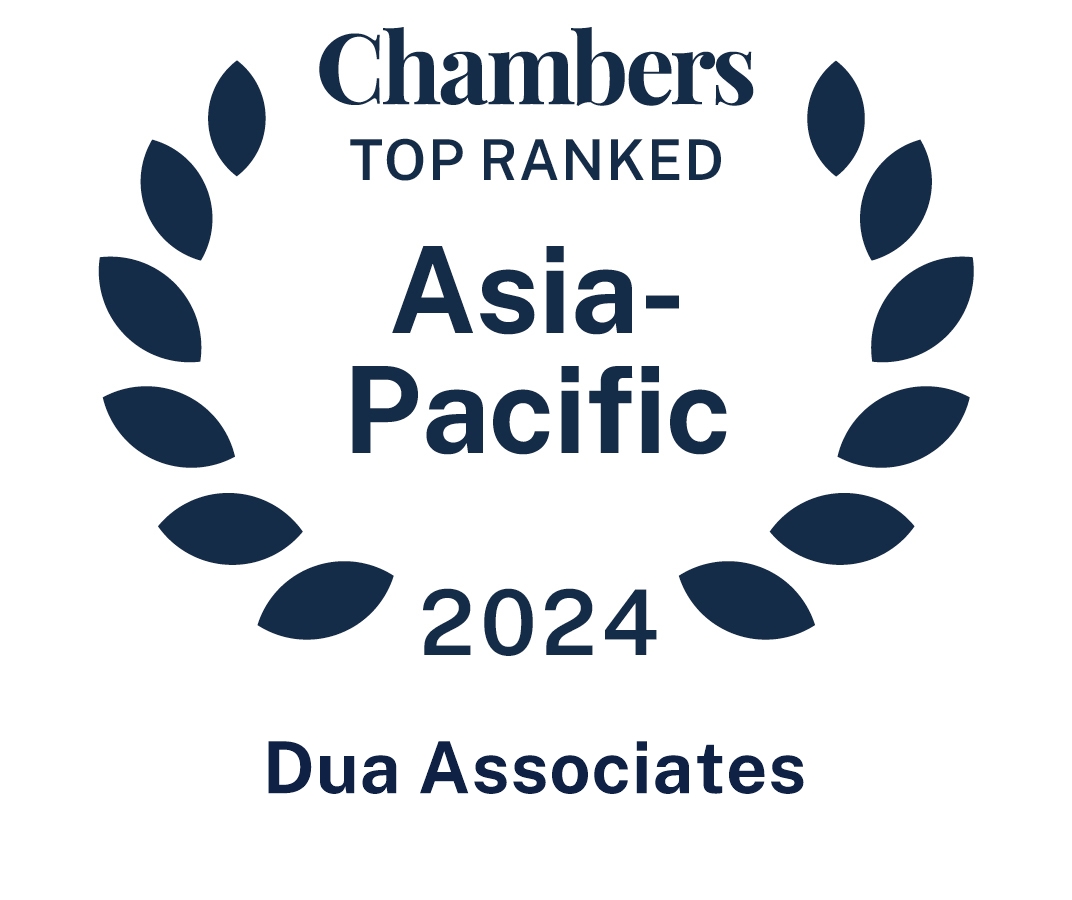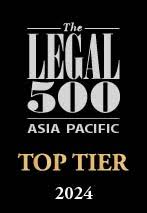 October 25, 2021
October 25, 2021
OVERVIEW OF TRADE REMEDIES
The modern trade system emerged from the ruins of the Second World War and was
principally the creation of the United Kingdom and the United States. The Bretton Woods
Conference (July 1944) created the International Monetary Fund and the World Bank, the
Dumbarton Oaks Conference (August to October 1944) formulated the United Nations
organisation and the Havana Conference (November 1947 to March 1948) fashioned the
Havana Charter for an International Trade Organization (ITO).
In 1947, the General Agreement on Tariffs and Trade (the GATT 1947) was negotiated
as a stopgap measure. Although the GATT 1947 was drafted, the ITO was never created
because of inaction on the part of the US Congress. Since inception, the primary objective
of GATT 1947 has been to reduce tariffs, enhance international trade and transparency.
As tariff rates were lowered over time following the GATT 1947 agreement, member
countries realised the need to reform the existing framework.4 From 1947 to 1994, the
GATT contracting parties engaged in eight rounds of negotiations, the last of which was the
Uruguay Round (1986–1994). The Uruguay Round agreements were signed in Marrakesh,
Morocco on 15 April 1994 and on the same date the World Trade Organization (WTO) was
born when the agreement establishing the WTO (the WTO Agreement) was signed.
The WTO Agreement, inter alia, included the GATT 1994 as an integral part, which is
binding on all members.6 The GATT 1994, in turn, encompassed the provisions of the GATT
1947, as well as the provisions of the legal instruments in force under the GATT 1947
One of the cardinal principles of the GATT 1994 and the WTO is the most-favourednation (MFN) treatment.8 MFN means that each member nation is required to apply tariffs
equally to all trading partners. ‘National treatment’, which is another core principle of the
GATT 1994, prohibits discrimination between imported and domestically produced goods
Pursuant to the GATT 1994, detailed guidelines have been prescribed under the specific
agreements that have also been incorporated in the national legislation of the member
countries of the WTO. Indian laws were amended with effect from 1 January 1995
by introducing a procedural framework for initiation and conduct of trade remedial
investigations, the imposition of measure and judicial review.11 The Directorate General
of Trade Remedies (DGTR) of the Ministry of Commerce and Industry, chaired by the
Designated Authority (DA), conducts all trade remedial investigations in India.12 From 1995
to 2020, India initiated 1,071 anti-dumping investigations, followed by the United States
with 817 investigations. From January 2020 to December 2020, WTO member countries
initiated 349 anti-dumping investigations, the highest number so far.13 Overall, from 1995
to 2020, China was subjected to 1,069 anti-dumping measures, followed by South Korea
with 301 measures.14 In the same period, WTO member countries initiated a total of 632
countervailing duty investigations; the majority of these (290) were initiated by the United
States, followed by the European Union (89) and Canada (76).15 India has initiated 28
countervailing duty investigations, most of which have occurred in the past three years and
are predominantly against China, Vietnam, Malaysia, Thailand and other Asian countries.
India has imposed safeguard measures in one investigation concerning imports of solar cells and modules.
Anti-dumping measures
Under international law, anti-dumping measures are regulated by Article VI of the GATT
and the Agreement on Implementation of Article VI of the GATT 1994 (the Anti-Dumping
Agreement). Anti-dumping laws allow a country to impose temporary duties on goods
exported by a foreign producer when the export price of the goods is less than the normal
value of ‘like articles’ sold in the exporter’s domestic market and is causing injury to the
domestic producers.
In India, anti-dumping actions are governed by Sections 9A, 9AA, 9B and 9C of the
Customs Tariff Act 1975 (the Act) and the Customs Tariff (Identification, Assessment and
Collection of Anti-dumping Duty on Dumped Articles and for Determination of Injury)
Rules 1995 (the Anti-dumping Rules) as amended from time to time.
The government agency entrusted with the determination of dumping and injury is
the DA and the DGTR.18 However, the DA only conducts trade remedial investigations and
recommends anti-dumping duties.19 The actual responsibility for imposition and collection of duties lies with the Ministry of Finance.20
India’s domestic law envisages that where any article is exported21 from any country
or territory to India at less than its normal value,22 upon the importation of the article into
India, the Indian government, through the Ministry of Finance, may, by notification in the
Official Gazette, impose an anti-dumping duty not exceeding the margin of dumping23 in
relation to the article.24
Since dumping per se is not actionable, there is a further requirement to establish that
there exists a causal link between dumped imports and injury caused to the domestic industry.25
The injury margin is arrived at by calculating the difference between the non-injurious price26
and the landed cost of the imported product.27 India follows the WTO’s lesser duty rule;28
that is, the Indian government imposes anti-dumping duty to the extent of the margin of
dumping or margin of injury, whichever is lower.29 The Indian government (through the Ministry of Finance) has the discretion not to implement the DA’s recommendations on
levying duty, in which case the findings automatically become infructuous and hold no
legal authority.
The DA usually recommends a duty for a maximum period of five years from the date
of its imposition unless revoked earlier. However, if the DA, in a review, is of the opinion
that the cessation of the duty is likely to lead to continuation or recurrence of dumping
and injury, it may from time to time extend the period of imposition for a further five years
(known as a ‘sunset review’).30 During the five-year period, the DA may carry out a ‘changed circumstances’ review, which is also called a ‘midterm review’.
India also allows ‘new-shipper’ reviews. In such a review, any exporter who has not
exported the product to India during the period of investigation may request a determination
of individual dumping duty. However, a new-shipper review is only permissible if the applying
exporter is not related to an exporter or producer in the exporting country who is subject to
the anti-dumping duties.
To prevent evasion of anti-dumping duty, the DA also undertakes
anti-circumvention investigations with a view to extending the scope of duty levied in a
previous investigation.
The recommendation and imposition of anti-dumping duty is appealable to a specialised
tribunal, the Customs, Excise and Service Tax Appellate Tribunal (CESTAT), constituted
under Section 129 of the Customs Act 1962.
Subsidies and countervailing measures
Article XVI of the GATT 1994 and the Agreement on Subsidies and Countervailing Measures
(ASCM) deal with the regulation of subsidies and the use of countervailing measures to offset
the injury caused by subsidised imports. Pursuant to the ASCM, a subsidy is deemed to exist
if there is a financial contribution by a government or any public body within the territory of
a member or there is a form of price support and a benefit is thereby conferred.
In India, countervailing actions are governed by Sections 9, 9B and 9C of the Act. In 1995, the Customs Tariff (Identification, Assessment and Collection of Countervailing Duty
on Subsidised Articles and for Determination of Injury) Rules 1995 (the Countervailing
Rules) were enacted to determine the manner in which the subsidised articles liable for
countervailing duty are to be identified, the manner in which subsidy provided is to be
determined and the manner in which the duty is to be collected and assessed under the
Act. As with anti-dumping, the DA conducts countervailing investigations and recommends
duties pursuant to the provisions given under the Act and the Countervailing Rules. The responsibility for the imposition and collection of duties as recommended by the DA lies
with the Ministry of Finance
Indian law on countervailing measures is similar to the ASCM and provides that
where any country or territory pays or bestows (directly or indirectly) any subsidy37 upon
the manufacture or production therein or the exportation therefrom of articles of any kind,
including any subsidy on transportation of the articles, then, upon the importation of such
articles into India, whether imported directly from the country of manufacture, production
or otherwise, and whether imported in the same condition as when exported from the
country of manufacture or production or changed in condition by manufacture, production
or otherwise, the central government may, by notification in the Official Gazette, impose a
countervailing duty not exceeding the amount of the subsidy.
The DA in determining the subsidy shall ascertain whether it As with anti-dumping practices, the DA is required to assess and accord a finding that the
import of a subsidised article into India causes or threatens to cause material injury to the
domestic industry. The principles for the determination of injury are set out in Rule 13
read with Annexure I of the Countervailing Rules. Rule 12 read with Annexure IV of the
Countervailing Rules provides for the calculation of the amount of countervailable subsidies.
However, in a scenario where an article subject to countervailing duty already attracts an
anti-dumping duty, a countervailing duty for the amount equivalent to the difference
between the quantum of countervailing duty and the anti-dumping duty payable may be
imposed by the government.
The countervailing duty ceases to have effect on the expiry of five years from the date
of its imposition, unless revoked earlier. However, if the central government, in a review, is
of the opinion that the cessation of the duty is likely to lead to continuation or recurrence
of subsidisation and injury, it may, from time to time, extend the period of imposition for
a further five years.40 An appeal against the order of determination or DA review regarding
the existence, degree and effect of subsidy in relation to the import of any article is made
to CESTAT
Safeguard measures
Article XIX of the GATT 1994 read with the Agreement on Safeguards (AOS) provides the
ground rules for safeguard actions. According to the AOS, a member may apply safeguard
measures to a product if the member has determined that it is being imported into its
territory in such increased quantities, absolute or relative to domestic production, as to cause serious injury to the domestic industry that produces identical or similar, or directly
competitive products.
Article 9 of the AOS provides for a special and differential treatment
for developing countries. The national legislation to implement the provisions of the AOS has been enacted under Section 8B of the Act. The Customs Tariff (Identification and Assessment of Safeguard Duty) Rules 1997 (the Safeguard Rules) govern the procedural aspects. Further, Section 8C of the Act and the Customs Tariff (Transitional Products Specific Safeguard Duty) Rules 2002 have been specifically enacted for imposing safeguard duty on any article imported
into India from China in such increased quantities and under such conditions as to cause
market disruption to the domestic industry. Except in relation to China, the India–Korea
Comprehensive Economic Partnership Agreement (Bilateral Safeguard Measures) Rules
201743 and the India–Japan Comprehensive Economic Partnership Agreement (Bilateral
Safeguard Measures) Rules 201744 also allow safeguard measures in the form of quantitative
restrictions to control surges in imports from Korea causing serious injury to domestic
producers of like or directly competitive products in India.
Safeguard duty investigations were previously conducted by the Directorate General
(Safeguards) of the Department of Revenue of the Ministry of Finance. Post-2018, safeguard
investigations are conducted under the aegis of the DA of the DGTR.
Similarly to the provisions of the AOS, Indian law provides that if the central
government, after conducting an enquiry, is satisfied that any article is imported into India in
such increased quantities and under such conditions as to cause or threaten to cause serious
injury to domestic industry, then it may, by notification in the Official Gazette, impose a
safeguard duty on that article. It may be noted that any safeguard duty imposed under the Safeguard Rules shall be on a non-discriminatory basis and applicable to all imports of such
an article irrespective of its source.
The safeguard duty ceases to have effect on the expiry of four years from the date
of its imposition unless revoked earlier.47 The DA also conducts a review of the need for
continuance of safeguard duty.48 In no case shall the safeguard duty continue to be imposed
beyond a period of 10 years from the date on which it was first imposed.49 If the duty so
recommended is for more than a year, the DA is to recommend progressive liberalisation
adequate to facilitate positive adjustment.
TREATY FRAMEWORK
Free trade agreements (FTAs) are arrangements between two or more countries or trading
blocs that primarily agree to reduce or eliminate customs tariff and non-tariff barriers on
substantial trade between them.51 Formation of FTAs is one of the permitted exceptions to
the MFN principle. Like other countries, India too has entered into FTAs and preferential
trade agreements (PTAs).52 India is also involved in other formats of bilateral and
pluralistic partnerships such as comprehensive economic cooperation agreements (CECAs),
comprehensive economic partnership agreements (CEPAs)53 and regional trade agreements
(RTAs).
India views RTAs and PTAs as ‘building blocks’ towards achieving the overall objective
of trade liberalisation. India’s initial foray into RTAs was through the Bangkok Agreement
(1975), the Global System of Trade Preferences (GSTP, 1988) and the SAARC PTA (SAPTA,
1993). India has built on these initiatives to engage with countries and regional blocs around
the globe.
It is known that FTAs and RTAs through their preferential tariffs accelerate trade among
nations. However, to combat surges of imports (including low-price imports) most bilateral
treaties preserve the right of members to invoke trade remedy measures. Noted examples are
(1) the Association of Southeast Asian Nations (ASEAN) Agreement on Trade in Goods,
which permits a member’s use of safeguards under the AOS; and (2) the CECA between
India and Singapore, which permits the use of subsidy and anti-dumping measures. Some of
the bilateral agreements entered into by India also call for strict compliance with the WTO
Agreement and incorporate WTO-plus obligations. A memorandum of understanding to
this effect was signed between India and Iran in 2018, mandating mutual cooperation in
trade remedial measures and sharing of data before initiation of investigations.
In November 2019, the government took a decisive step to withdraw from the Regional
Comprehensive Economic Partnership (RCEP). This decision to opt out of the RCEP was
based on the understanding that the treaty’s structure did not address outstanding issues
and key concerns for India.57 On 15 November 2020, 15 member countries, namely the 10
ASEAN member states and Australia, China, Japan, New Zealand and South Korea, signed
the RCEP after eight years of negotiations.
Although trade negotiations were marred by the covid-19 pandemic, India and
Mauritius signed a comprehensive economic cooperation and partnership agreement
(CECPA) on 22 February 2021.58 One of the unique features of the India–Mauritius CECPA
is its automatic trigger safeguard mechanism (ATSM), wherein both countries may impose
a safeguard duty (once duties are eliminated or reduced) on imports of highly sensitive
products after reaching a certain threshold.59 In accordance with the CECPA, the ATSM will
be negotiated within two years of the date of the agreement. If negotiations are not concluded
within two years, a default ATSM will apply.60
RECENT CHANGES TO THE REGIME
Over the past few years, the DGTR has taken multiple steps to enhance transparency,
uniformity and fairness in the investigation process. The government introduced a Manual
of Operating Practices for Trade Remedy Investigations and a Handbook of Operating
Procedures of Trade Defence Wing. The Manual of Operating Practices for Trade Remedy
Investigations lists step-by-step instructions to be implemented while conducting trade
remedial investigations, whereas the Handbook of Operating Procedures of Trade Defence
Wing outlines the role of the government in providing institutional support to Indian exporters in investigations conducted by other WTO members against India. The Supreme
Court of India recognised the Manual of Operating Practices forTrade Remedy Investigations
in a judgment in 2020. The most significant change regarding anti-dumping investigations in India was the amendment to the Anti-dumping Rules in 2020 whereby the scope of a ‘related entity’ for
the determination of a domestic industry was expanded (Article 4 of the Anti-Dumping
Agreement). Additionally, the central government defined the length of an investigation,
introduced a legal framework for determining the duty for new shippers if the DGTR opts
for sampling in the original investigation and amended provisions for anti-circumvention
investigations and anti-cumulative assessments.
The central government also introduced anti-absorption provisions in respect of antidumping and countervailing duty investigations through amendments to Sections 9 and 9A of the Customs Tariff Act 1975 by the Finance Bill 2021. Based on the same, the DA proposes to introduce anti-absorption rules in respect of anti-dumping and countervailing duty measures. As a first step, the DA has published a ‘stakeholders’ consultation, which invites input from the industry with a view to give effect to the amendments regarding antiabsorption rules.
Finally, similar to the Anti-dumping Rules, the central government amended the
Countervailing Rules. The key changes relate to the scope of a domestic industry, ‘like
articles’, the length of an investigation, the framework for pre-initiation consultation, price
undertakings, expiry review and anti-circumvention investigations.
SIGNIFICANT LEGAL AND PRACTICAL DEVELOPMENTS
As stated above, DA determination orders and Ministry of Finance imposition orders are
statutorily appealable to CESTAT on the merits. However, determination or imposition
orders are also amenable to judicial review by the tribunals, high courts and the Supreme
Court of India (India’s highest court). In Exotic Décor Pvt Ltd v. Designated Authority, DGAD,
65 CESTAT noted that the scope of a product under consideration should not be widened post initiation of an investigation. It was observed that the products not manufactured by the domestic producer could not be the cause of any material injury to it. Thus, referring to its earlier decisions on the issue, CESTAT concluded that where the domestic industry has not produced a ‘like article’ to a product type under investigation, such product types cannot be included in the scope of the
product under investigation. In its first countervailing duty case, Metrod (Malaysia) Sdn Bhd & Ors v. Designated Authority, DGAD, CESTAT examined the footnote to Article 1 of the ASCM, which
deals with the exemption or remission of duties or taxes on exported products. The tribunal relied on the WTO’s decision in EU – PET (Pakistan)67 and held that the DGTR erred
in considering an entire import duty exemption on raw material received by the appellant
for exports as a subsidy. More specifically, CESTAT held that the ‘Designated Authority
was required to compute such “excess” amount and the entire exemption received by the
appellant could not have been countervailed’.
In the 2020 case The Designated Authority and Ors v. The Andhra Petrochemicals Limited, the Supreme Court of India relied upon the guidelines contained in the Manual of Operating Practices for Trade Remedy Investigations (Period of Investigation and Injury Investigation Period) to assess the importance of recent data to carry out an investigation. In line with the WTO Panel Report in the dispute Pakistan – BOPP Film (UAE), published in Janaury 2021, the Supreme Court held that anti-dumping investigations based on obsolete data will defeat the purpose of levying a duty. This judgment is also consistent with the recent amendment to Anti-dumping Rules, which mandates that an investigation should not last for more than six months, counted from the date the investigation is initiated.
TRADE DISPUTES
Settling international trade disputes between the Member States is the responsibility of the
WTO’s Dispute Settlement Body (DSB). According to the WTO’s dispute settlement system
as set out in the Dispute Settlement Understanding, the disputing members countries are
first required to undergo a consultation process aimed at resolving disputes amicably, failing
which the complainant country may request the DSB to establish a dispute settlement panel.
The DSB has the sole authority to establish these panels of experts to consider cases and to
accept or reject the panel’s findings or the results of an appeal. Either side can appeal a panel’s
ruling. Sometimes both sides do so. Appeals have to be based on points of law, such as legal
interpretation, and cannot re-examine existing evidence or examine new issues.
India has been an active participant before the DSB and has to date raised 24 disputes
as a complainant. India has also faced the brunt of 32 cases filed against it by other member
nations. In 170 disputes, India acted as a third party.72 Of the 24 WTO disputes filed by
India, three disputes are at an advanced stage.
At the time of writing, the WTO and its members are facing a crisis on account of
non-functioning of the WTO Appellate Body due to non-appointment of the Appellate
Body members. Under Article 17 of the Understanding on Rules and Procedures Governing
the Settlement of Disputes, the Appellate Body comprises seven members appointed by the
DSB to serve a one-year term, with the possibility of being reappointed for one additional
term. Currently, there are no members on the Appellate Body as the term of the last sitting
member expired on 30 November 2020.73 As a result of a long-standing impasse over the appointment of members, the Appellate Body is unable to review appeals, resulting in a
rule-based, well-functioning, impartial and binding dispute settlement system currently
being defunct.
Trade remedy disputes filed by India
On 9 September 2016, in the WTO dispute US – Renewable Energy, India requested
consultations with the United States regarding domestic content requirements and other
subsidies instituted by the governments of the states of Washington, California, Montana,
Massachusetts, Connecticut, Michigan, Delaware and Minnesota, in the energy sector. India
claimed that the measures resulted in violation of:
The Report of the Panel was issued on 27 June 201976 and found that the measures in dispute
were inconsistent with the United States’ obligations under Article III:4 of the GATT, as they
provided an advantage for the use of domestic products, which amounted to a less favourable
treatment for similar or identical imported products.77 Currently, the Report of the Panel is
the subject of an appeal to the WTO Appellate Body at the request of the United States.78
In 2018, the US imposed additional import duties of 25 per cent and 10 per cent on
certain steel products and aluminium products from all countries except Canada, Mexico,
Australia, Argentina, South Korea,79 Brazil and those in the European Union. Challenging
the imposition of additional import duty, India filed the dispute US – Steel and Aluminium
Products (India) and requested the establishment of a panel by the DSB.80 Since the selective
levy of additional duty distorts international trade, eight other WTO members, namely
Canada, China, the European Union, Mexico, Norway, Russia, Switzerland and Turkey,
have also filed disputes against the United States and almost 30 member countries have
reserved their right as third party. In January 2019, the Director General established a panel
to adjudicate the dispute.81 In February 2021, the panel conveyed its inability to issue a panel
report within the stipulated time due to delay caused by the covid-19 pandemic.
Trade remedy disputes against India
In 2013, the United States filed the case India – Solar Cells, wherein both the panel and the
Appellate Body found measures introduced by the government of India to be inconsistent
with Article III of GATT 1994 and Article 2.1 of the TRIMs Agreement. Although India
gave notice of its decision to implement the DSB ruling by December 2017, the United
States claimed that India had failed to comply with the ruling and sought suspension of
concessions accorded to India.83 Subsequently, in 2018, India requested the DSB to establish
a panel to resolve the disagreement between India and the United States.
In 2015, the government conducted a safeguard investigation into imports of ‘hot
rolled flat products’ and imposed a safeguard duty of 20 per cent ad valorem.
85 Aggrieved by this decision, Japan filed the dispute India – Iron and Steel Products86 with the DSB and
submitted that the safeguard measures were imposed in violation of Article 2 of the GATT
1994 and various provisions of the AOS. The DSB panel concluded that India’s decision
was inconsistent with Articles 3.1 and 4.2(c) of the Agreement on Safeguards, in failing to
provide reasoned conclusions on all pertinent issues of fact and law. Subsequently, both
India and Japan gave notice of their decisions to appeal this ruling before the Appellate
Body. Owing to the limited number of members available, the Appellate Body has not
issued its report yet.
Another WTO trade remedy case, India – Export Related Measures, is at the appellate stage. In this dispute, the United States challenged numerous programmes applicable to an array of products and in its decision the panel held certain programmes, such as the Merchandise Exports from India Scheme, to be inconsistent with the ASCM. By the end of
2019, the government of India had notified the DSB of its decision to appeal to the Appellate
Body.92 Notwithstanding this appeal, the government is already taking initiatives to modify,
amend or terminate the programmes found to be inconsistent with the ASCM.
In 2019, Brazil (DS579), Australia (DS580) and Guatemala (DS581) filed disputes
with the WTO challenging domestic support subsidies and export subsidies granted by India
to the sugar and sugarcane industry. In these disputes, WTO members claimed various
measures to be in violation of the Agreement on Agriculture and the ASCM. The complainants
claimed that India has substantially increased domestic support, which adversely impacts the
competitiveness of other exporting WTO members. At present, the dispute is at the panel
stage, but the panellists have apprised the DSB that they expect to issue their reports in the
second half of 2021.
OUTLOOK
Since early 2020, global trade has been significantly disrupted by the covid-19 pandemic
and lockdown restrictions. The Indian government’s response moved towards promotion
of national production by building domestic capacity and reshoring imports into domestic
production. The aim was to endorse and encourage self-reliance in manufacturing, driven by
the need to reduce imports. The government wanted the economy to move to ‘self-reliant
India’, which included controlling imports into India. The trade policy was changed with
the introduction of trade-restricting measures along with policies to reduce dependence
on international supply chains. From April 2020 to February 2021, India initiated close
to 50 investigations – an unprecedented total – against a number of countries concerning
various goods.
The pandemic also made it more difficult to review information and undertake
verification of manufacturing units during an investigation. In addition, the investigating
authority found it challenging to determine injury when establishing a causal link, on
account of alleged dumping or subsidisation, and other factors such as national lockdowns.
The government intends to relax international trade measures to boost the economy.
On account of slowdown in global trade over the past year, key industry sectors in India may
witness a surge in imports, resulting in multiple trade remedial investigations.
ABOUT THE AUTHORS
SHIRAZ RAJIV PATODIA
Dua Associates
Shiraz Rajiv Patodia is a senior solicitor at Dua Associates, based at the firm’s New Delhi
offices. Ms Patodia is a qualified solicitor of the Bombay Incorporated Law Society and an
advocate-on-record of the Supreme Court of India. She leads a team of highly qualified and
dedicated professionals in international trade law, anti-corruption and dispute resolution
practice groups.
Ms Patodia holds a bachelor’s degree in commerce from the Sydenham College of
Commerce and Economics, University of Bombay, a Bachelor of Laws degree from the
Government Law College, Bombay and is a solicitor of the Bombay Incorporated Law Society.
In more than 30 years of professional legal experience, Ms Patodia has served and
continues to serve as lead counsel to several leading international corporations in highly
contentious litigation pertaining to anti-corruption matters or white-collar crime, intellectual
property rights, tortious liability, environmental laws and contract, constitutional and
administrative law. She holds the distinction of having created specialised practice groups on
international trade, anti-corruption and anti-bribery, and intellectual property at the firm.
She regularly represents interested parties in trade remedy investigations conducted by the
Indian Ministry of Commerce. She also appears before the Customs, Excise and Service Tax
Appellate Tribunal, high courts and the Supreme Court of India.
MAYANK SINGHAL
Dua Associates
Mayank Singhal is a principal associate at Dua Associates, based at the firm’s New Delhi offices.
Mr Singhal concentrates his practice in international trade and investment transactions,
corporate disputes and regulatory investigations. Mr Singhal, holds a bachelor’s degree in
commerce and an LLM degree with specialisation in corporate law from the National Law
University, Jodhpur. He has been actively associated with the practice of international trade
law, advising a range of exporters, chambers of associations, importers and user associations
in various trade remedy investigations carried out by the Indian Ministry of Commerce, the
US Department of Commerce and various WTO member countries.








